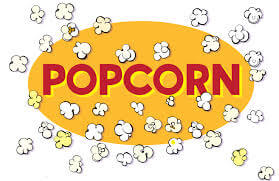You know how sometimes your perception of what you see isn’t exactly what was INTENDED for you to see (or think. or believe.)? I find this to be particularly true in food marketing, where labelling language in the form of subtle wording slights, omissions or assumptions often purports an item to be “a healthier choice”, when in reality, it simply isn’t . Either that, or the actual food item is a far cry from what was insinuated on the packaging.
Case in point.
My nutrition clients are busy. They’re travelling, on the go, and don’t have much extra time, so we often brainstorm ideas for nutritious, delicious, energy-sustaining, pack-along snacks.
Recently, a client recounted a variety of snack choices consumed during a weekend of travelling, and one particular choice repeatedly popped up; “SkinnyPop”. 
I’ve had a number of clients rave about this popcorn treat, how it’s “healthy”, and a “better-choice snack”. They find the term “skinny” particularly appealing, and more than a few have mentioned that it’s “addictive, like crack”.
I had to learn exactly what about this treat was so darn “skinny”, and why it seemed to have such a hold on my clients.
After reading the “SkinnyPop”website, I literally sat shaking my head in wonder. The “skinny” in “SkinnyPop”? NOTHING to do with calories or fat, and EVERYTHING to do with ingredients.
From the website:
What makes SkinnyPop “skinny”? Do you remember old-fashioned, buttered popcorn? Like the popcorn you can still get at movie theatres? We do. In fact, we used to make it. It was heavy on buttery topping and other artificial flavors. Our fans asked us for something with less topping, but with that same great taste, and we came up with SkinnyPop – skinny on ingredients!
That’s it?? Fewer ingredients?
If I conducted a random poll on what comes to mind if I said “SkinnyPop”, I think LESS CALORIES | LESS FAT | NON-FATTENING | EAT WITH RECKLESS ABANDON is what most people would think, not “fewer ingredients”.
And the skinny ingredients in “SkinnyPop”? Popcorn, sunflower oil, salt.
Nothing special. Nothing surprising. Nothing you don’t have in your own kitchen.
Nutritional breakdown?
- 1 cup “SkinnyPop” Original Flavor – 40 calories | 2.6 g fat | .8 g fiber
- 1 cup popcorn popped in oil – 55 calories | 3 g fat | 1.1 g fiber
In terms of calories and fat, there is essentially no difference. “SkinnyPop” comes in 4 flavors; original, black pepper, white cheddar and naturally sweet. Serving size for original and black pepper is 3.75 cups, but 3.5 cups for white cheddar and naturally sweet. A smaller serving size yields a lower calorie and fat amount closer to the original/plain version – even with the addition of ingredients that bump up calories and fat.
Sneaky.
Personally, I’m a HUGE fan of popcorn. I like to pop my own on the stove top, in a combination of olive and coconut oils or plain canola oil, then sprinkle with sea salt, and if I’ve a taste for it, nutritional yeast.
Popcorn is a whole grain, naturally low in calories and fat, and high in fiber. There is one piece of literature that received quite a bit of press a number of years ago, suggesting that popcorn is high in polyphenols (a type of antioxidant) http://www.acs.org/content/acs/en/pressroom/newsreleases/2012/march/popcorn-the-snack-with-even-higher-antioxidants-levels-than-fruits-and-vegetables.html, yet a literature search in reliable, credible PubMed turned up no other such research.
Regardless, popcorn does have an overall healthy profile, and I definitely recommend it as a filling, nutritious snack; just remember to pay attention to the amount of butter, cheese, or caramel you douse it in – completely changes the landscape, if you know what I mean. And if you have diabetes, 3 cups of popcorn equals 1 carbohydrate serving (whether it’s “SkinnyPop” or not!).
If you choose to skip the oil, this looks like an interesting way to air-pop popcorn https://www.vat19.com/item/catamount-microwave-popcorn-popper. I advise you avoid microwave popcorn completely – neither the ingredients nor the packaging are good for your health.
The take-away? When it comes to food manufacturing and marketing, it pays to dig a little deeper to learn the true meaning behind the hype. And as for “addictive, like crack”? I’ve never tasted it, so I welcome your comments and experiences!

